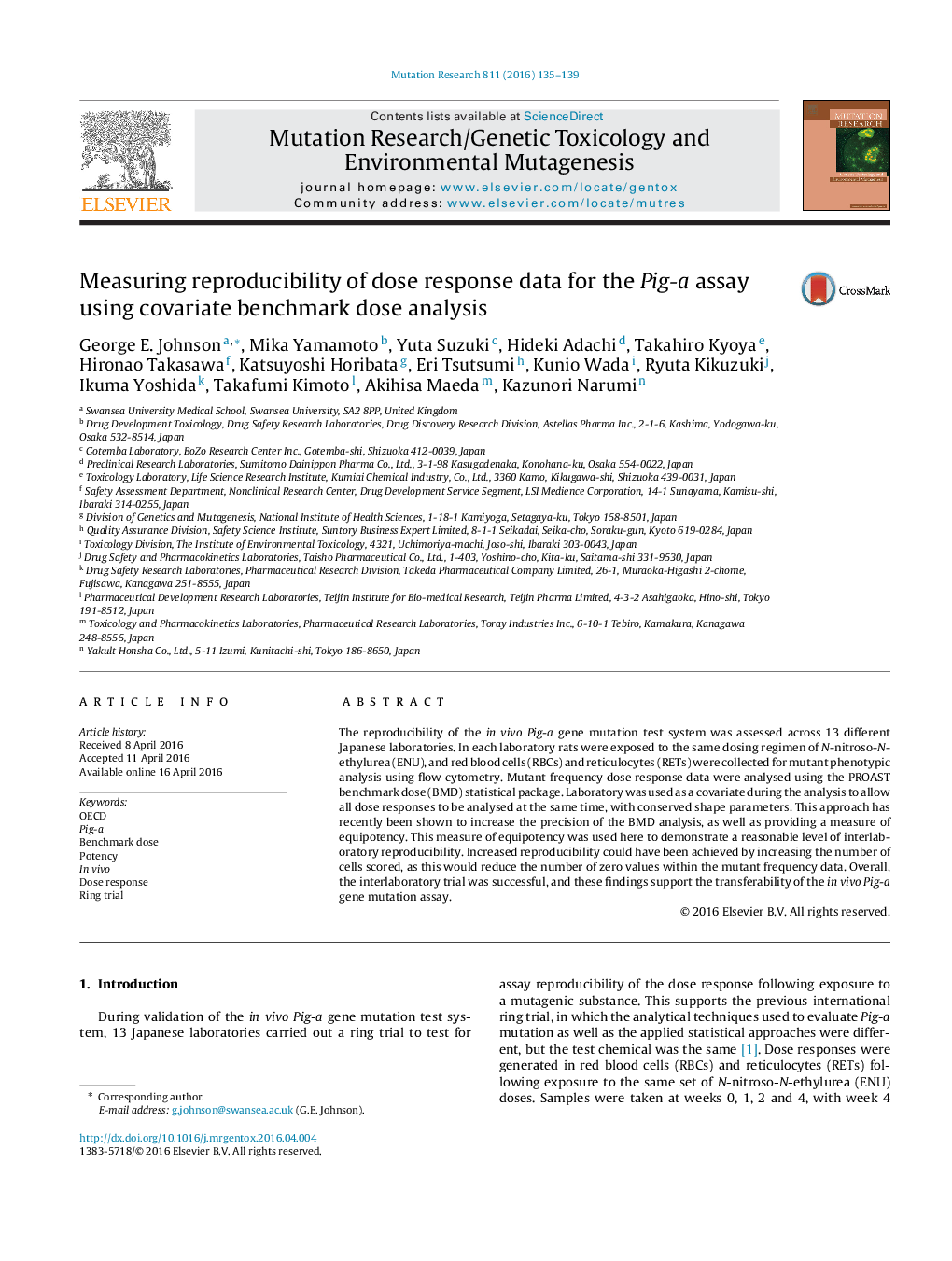| Article ID | Journal | Published Year | Pages | File Type |
|---|---|---|---|---|
| 5528780 | Mutation Research/Genetic Toxicology and Environmental Mutagenesis | 2016 | 5 Pages |
â¢Interlaboratory reproducibility is reasonable for in vivo Pig-a MF.â¢Covariate benchmark dose analysis provided a measure of reproducibility.â¢RBCs provided a greater level of Pig-a MF reproducibility and precision than RETs.â¢Reducing the number of zero values would increase overall reproducibility.
The reproducibility of the in vivo Pig-a gene mutation test system was assessed across 13 different Japanese laboratories. In each laboratory rats were exposed to the same dosing regimen of N-nitroso-N-ethylurea (ENU), and red blood cells (RBCs) and reticulocytes (RETs) were collected for mutant phenotypic analysis using flow cytometry. Mutant frequency dose response data were analysed using the PROAST benchmark dose (BMD) statistical package. Laboratory was used as a covariate during the analysis to allow all dose responses to be analysed at the same time, with conserved shape parameters. This approach has recently been shown to increase the precision of the BMD analysis, as well as providing a measure of equipotency. This measure of equipotency was used here to demonstrate a reasonable level of interlaboratory reproducibility. Increased reproducibility could have been achieved by increasing the number of cells scored, as this would reduce the number of zero values within the mutant frequency data. Overall, the interlaboratory trial was successful, and these findings support the transferability of the in vivo Pig-a gene mutation assay.
